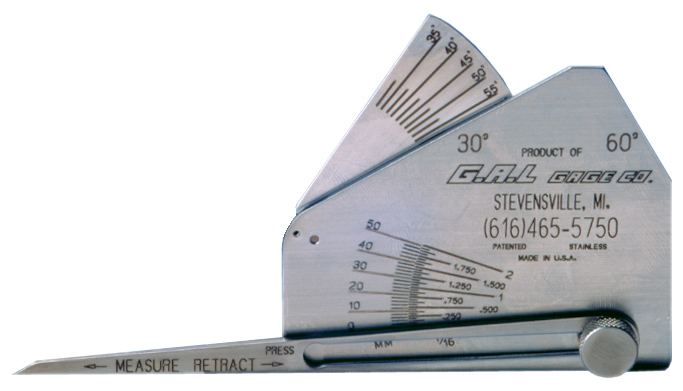Understanding Gauge Fillet Weld: A Comprehensive Guide for Welders
Understanding Gauge Fillet Weld: A Comprehensive Guide for Welders
Blog Article
The Ultimate Overview to Fillet Weld Quality Assurance: Ensuring Strength and Longevity in Your Welded Joints
In the realm of welding, making sure the stamina and toughness of fillet welds is vital for the stability of welded joints. As we begin on this exploration of fillet weld high quality control, we will reveal crucial factors that affect weld stamina, dig into reliable inspection techniques, and review methods for avoiding usual weld defects.
Significance of Fillet Weld High Quality Control
Ensuring correct fillet weld quality assurance is vital in guaranteeing the structural integrity and durability of welded parts in various sectors. Fillet welds are typically used in structural steelwork, bridges, pressure vessels, pipelines, and various other important infrastructure where the toughness of the weld is important to total safety and performance. Quality control steps such as aesthetic evaluations, non-destructive testing, and adherence to welding procedures assist determine potential problems like lack of fusion, incomplete penetration, damaging, or too much reinforcement.
Secret Factors Impacting Weld Stamina
Achieving ideal weld stamina needs cautious factor to consider of different crucial elements that affect the honesty and toughness of the welded joint. The very first critical variable is appropriate joint preparation, which includes cleaning the base metals to get rid of any type of pollutants that can weaken the weld. In addition, the fit-up of the joint is vital to make certain correct penetration and combination of the filler material.
The option of the proper welding technique and criteria likewise plays a significant role in identifying weld strength. Aspects such as warm input, travel speed, and electrode angle can impact the quality of the weld. Keeping the proper interpass temperature level throughout multi-pass welding is important to stop cracking and guarantee a solid bond between the layers.
Furthermore, the option of filler product and its compatibility with the base metals is important for accomplishing high weld toughness. Using filler product with the ideal mechanical homes can enhance the overall stability of the weld. Finally, post-weld warm treatment and proper evaluation strategies are essential action in ensuring the stamina and longevity of the welded joint.
Inspection Methods for Weld Integrity

Another critical assessment approach is fluid penetrant testing, where a fluid color is used to the weld surface - Gauge Fillet Weld. The dye seeps right into any type of surface-breaking problems, making them visible under UV light. This approach is efficient for detecting imperfections that might not be noticeable to the naked eye


Ultrasonic screening is likewise extensively utilized Check This Out for checking weld integrity. High-frequency sound waves are directed right into the weld, and any disruptions in the acoustic wave pattern indicate prospective flaws like fractures or lack of blend.
These examination techniques play a vital role in making certain the top quality and dependability of welds, eventually adding to the total stamina and durability of bonded joints in commercial setups.
Avoiding Typical Weld Defects
In order to preserve the architectural stability of bonded joints in commercial applications, it is vital to carry out safety nets to attend to common weld issues. One typical flaw is lack of blend, where the filler product stops working to bond adequately with the base steels, Resources resulting in vulnerable points in the weld. This can be avoided by guaranteeing correct warmth control and making use of the right welding strategy.
One more regular problem is porosity, created by gas entrapment in the weld steel during the welding process. To stop this, it is important to cleanse the base metals thoroughly, use completely dry electrodes, and maintain an appropriate welding atmosphere with appropriate ventilation.
Additionally, fractures in welds can compromise the joint's toughness. To avoid this flaw, it is essential to control the cooling rate after welding, make use of pre-heating when needed, and select suitable welding specifications.
Enhancing Bonded Durability With Proper Strategies
One vital approach to enhance weld durability is to make sure appropriate weld bead positioning. By placing the weld bead precisely within the joint, the weld's stamina and resistance to exhaustion can be significantly enhanced.
Choosing the appropriate filler steel and ensuring the tidiness of the base steels can protect against additions and various other defects that could endanger the weld's sturdiness. By applying these appropriate strategies, welders can guarantee that their bonded joints exhibit remarkable strength description and toughness, meeting the highest quality requirements.
Final Thought
Finally, keeping excellent quality control standards for fillet welds is essential for guaranteeing the strength and toughness of bonded joints. By comprehending the essential aspects influencing weld strength, utilizing assessment methods for weld honesty, protecting against usual weld problems, and using appropriate techniques, welders can enhance the general durability of their welds. It is crucial to prioritize quality control actions to create reputable and resilient welded joints.
In the realm of welding, ensuring the strength and resilience of fillet welds is paramount for the honesty of welded joints. As we get started on this exploration of fillet weld top quality control, we will certainly discover essential variables that affect weld stamina, dig right into effective inspection methods, and go over approaches for protecting against typical weld issues.Accomplishing ideal weld strength calls for careful consideration of various key elements that influence the stability and toughness of the bonded joint (Gauge Fillet Weld).In verdict, preserving high top quality control criteria for fillet welds is important for ensuring the toughness and resilience of bonded joints. By comprehending the vital elements impacting weld toughness, using examination approaches for weld stability, avoiding typical weld flaws, and using correct methods, welders can enhance the overall sturdiness of their welds
Report this page